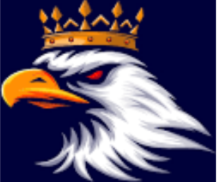Introduction Bald Eagle
The Bald Eagle is maybe the most notable flying predator in North America, loved for its great appearance, exceptional hunting ability, and representative importance.
As the public bird of the US, the Bald Eagle holds a unique spot in the hearts and brains of individuals all over the planet.
This article investigates the interesting universe of the Bald Eagle, from its actual qualities to its social importance and protection status.
1. Description and Characteristics:
The Bald Eagle is an enormous flying hunter with an unquestionable white head and tail standing apart emphatically from its dull natural shaded body.
Adults gloat a wingspan of up to 7 feet (2.1 meters) and can weigh between 6 to 14 pounds (2.7 to 6.3 kilograms). Their trapped mouths areas of strength for and are adapted to hunting fish, their fundamental wellspring of food.
2. Habitat and Range:
Bald Eagles are basically tracked down close to enormous groups of untamed water, like lakes, streams, and seaside estuaries, where they can track down bountiful prey.
They occupy a large number of environments, from thick woods to open fields, yet require tall trees or bluffs for settling and roosting.

3. Hunting and Feeding Behavior:
Bald Eagles are crafty trackers, going after fish, waterfowl, and little warm blooded creatures. They utilize their sharp vision to recognize prey from high roosts or while taking off above.
While hunting fish, they utilize an emotional plunging jump, stretching out their claws to grab their prey from the water’s surface.
4. Breeding and Reproduction:
Bald Eagles structure monogamous matches that mate forever, captivating in intricate romance shows that include flying gymnastics and calling.
They construct huge homes, frequently reusing similar site many years, and lay one to three eggs for every rearing season. The two guardians partake in hatching the eggs and raising the youthful.
5. Cultural Significance:
The Bald Eagle holds significant social importance for the vast majority native people groups of North America, who venerate it as an image of solidarity,
boldness, and opportunity. In 1782, the Bald Eagle was picked as the seal of the US, addressing the country’s upsides of freedom and flexibility.

6. Conservation Status:
When confronting the edge of termination because of territory misfortune, contamination, and hunting, the Bald Eagle has put forth a surprising recuperation because of preservation attempts and lawful insurances.
In 1967, it was recorded as a jeopardized species under the Imperiled Species Act, prompting broad protection endeavors that brought about its delisting in 2007.
7. Conservation Challenges:
While the Bald Eagle has bounced back in many pieces of its reach, it actually faces dangers from environment annihilation, contamination, and human aggravation.
Impacts with electrical cables, lead harming from ingesting defiled prey, and unsettling influences to settling locales stay progressing worries for their drawn out endurance.
8. Conservation Efforts:
Preservation associations, government offices, and concerned residents keep on working enthusiastically to safeguard Bald Eagles and their territories.
Endeavors incorporate natural surroundings rebuilding, checking of settling destinations, and government funded instruction missions to bring issues to light about the significance of saving these heavenly birds.
Life Cycle of the Bald Eagle
1. Fledging and Adolescent Stage


